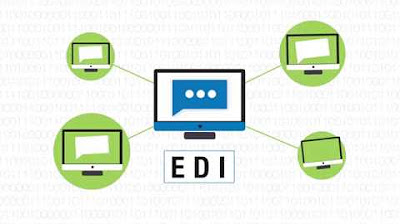EDI For Container Terminals
Summary
TLDRLuke Castera, founder of Octopi by Navis, presents an insightful overview of Electronic Data Interchange (EDI) in the cargo terminal industry. He explains the significance of EDI, its global use, and the key messages terminals exchange with partners. Castera highlights two main EDI standards, UN/EDIFACT and ANSI X12, detailing their differences and applications. He emphasizes the complexity of EDI and Octopi's commitment to simplifying these processes for terminal operators, ensuring seamless and real-time communication with shipping lines.
Takeaways
- 📚 EDI stands for Electronic Data Interchange and is used for electronic communication of information traditionally on paper across various industries.
- 🌐 EDI is exchanged using protocols like SFTP, FTP, or SMTP, with SFTP being the most secure and recommended by Octopi.
- 📈 EDI is an old standard, with modern alternatives being APIs and web hooks using data formats like XML or JSON, but the shipping industry has been slow to adapt.
- 🔍 There are two main EDI standards in cargo terminals: UN/EDIFACT, commonly used outside the U.S., and ANSI X12, used mainly within the U.S.
- 🔢 UN/EDIFACT releases two versions annually, A and B, with D95B and D00B being the most common in the shipping industry.
- 🚢 ANSI X12 is used by U.S. carriers for communication with U.S. Customs and Border Protection, often for cargo manifest and other information.
- 🔄 EDI messages are complex and varied, serving different functions such as manifest, discharge, and loading confirmations.
- 🛳️ The speaker suggests that terminals should not deal directly with EDI complexities and should rely on software like Octopi to manage these.
- 🔄 Import and export flows in container terminals involve specific EDI messages for cargo manifests, discharges, gate-outs, and loading confirmations.
- 🚧 Vessel plans are communicated through specific EDI messages like BAPLEY for vessel stowage plans and are crucial for terminal operations.
- 🆕 Octopi offers EDI integration with various shipping lines and handles the complexity of EDI messages, providing a user-friendly experience for terminal operators.
Q & A
What does EDI stand for and what is its primary function?
-EDI stands for Electronic Data Interchange. It is a concept where businesses electronically communicate information that was traditionally communicated on paper, such as purchase orders and invoices, to facilitate efficient and secure data exchange.
In which industries is EDI commonly used?
-EDI is used in various industries including shipping and maritime, banking, healthcare, and others, to electronically exchange business documents between parties.
What are the common protocols used for exchanging EDI messages?
-EDI messages are typically exchanged using protocols like SFTP, FTP, or SMTP. SFTP is considered the most secure method for exchanging EDI messages.
What does the term 'API' refer to in the context of modern data exchange?
-API stands for Application Programming Interface. It is a more modern approach for computers to exchange data, often using data formats like XML or JSON.
What are the two main EDI standards used in cargo terminals?
-The two main EDI standards used in cargo terminals are EDIFACT, which is a standard by the United Nations, and ANSI X12, which is used primarily in the United States.
Why has the shipping and maritime industry been slow to adapt to modern technologies like APIs?
-The shipping and maritime industry has been slow to adapt to modern technologies due to various reasons, including the complexity of existing systems and the inertia of established practices.
What is the most commonly used version of the EDIFACT standard in the shipping and maritime industry?
-The most commonly used version of the EDIFACT standard in the shipping and maritime industry is D95B.
What is the purpose of the cargo manifest in EDI for container terminals?
-The cargo manifest is an EDI message sent to a container terminal that lists all the bill of laddings and details of the cargo arriving on a vessel, allowing the terminal to prepare for the arrival and processing of the cargo.
What is the difference between EDIFACT and ANSI X12 in terms of usage in the United States?
-EDIFACT is more commonly used outside of the United States, while ANSI X12 is a competing standard used primarily by carriers located in the U.S., especially for communication with U.S. Customs and Border Protection.
How does a terminal operator know when a container has been discharged and ready for pickup?
-When a container is discharged, the terminal operating system sends a message to the shipping line, typically a QUERY in EDIFACT or a 322 message in ANSI X12, to notify them of the discharged full import container.
What is the significance of real-time EDI messaging in terminal operations?
-Real-time EDI messaging allows terminal operators to immediately notify shipping lines of events such as container discharges, gate exits, and loadings, ensuring up-to-date information and efficient coordination between parties.
What is the purpose of the BAPLEY file in vessel planning?
-The BAPLEY file is an EDIFACT standard used for vessel planning, which includes the state of the container vessel upon arrival, listing all containers, their locations, weights, and additional information, facilitating the planning of container placement on the vessel.
Why is it important for the final departure vessel plan to match the pre-stowage plan?
-It is important for the final departure vessel plan to match the pre-stowage plan to ensure that the vessel has been loaded as intended, maximizing operational efficiency and preventing potential issues during the voyage.
What is the role of the OCTOPI software in handling EDI for cargo terminals?
-The OCTOPI software simplifies the complex process of EDI for cargo terminals by managing the exchange of EDI messages with shipping lines, allowing terminal operators to focus on their core operations without needing to understand the intricacies of EDI messaging.
Outlines

此内容仅限付费用户访问。 请升级后访问。
立即升级Mindmap

此内容仅限付费用户访问。 请升级后访问。
立即升级Keywords

此内容仅限付费用户访问。 请升级后访问。
立即升级Highlights

此内容仅限付费用户访问。 请升级后访问。
立即升级Transcripts

此内容仅限付费用户访问。 请升级后访问。
立即升级5.0 / 5 (0 votes)






